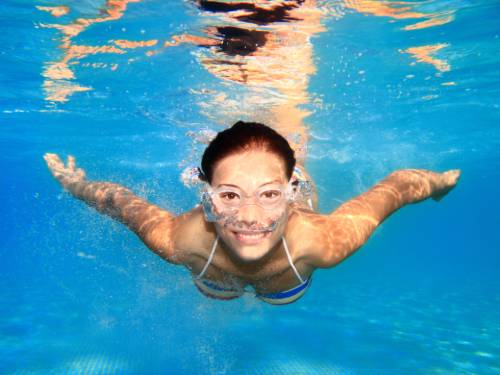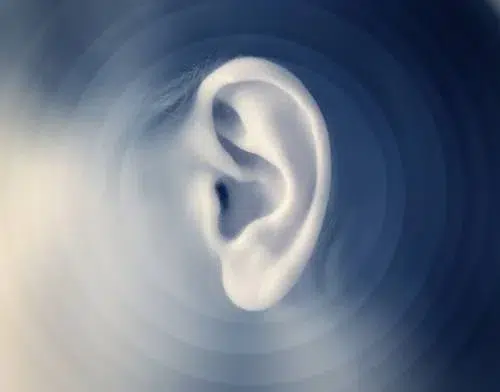After a fun day swimming at the beach or at the local pool, the last thing you want you or your child to experience is the pain and irritation of swimmer’s ear. Though it’s more common in kids and teens than in adults, this painful outer ear infection can unfortunately impact anyone.
It’s important to empower yourself with knowledge on this common outer ear infection. How is it commonly caused? Are there any preventative measures you can take? And what does treatment look like for swimmer’s ear?
Swimmer’s Ear (Otitis Externa) vs. Middle Ear Infection (Otitis Media)
Known officially as otitis externa, swimmer’s ear is an infection that affects the ear canal and the outer ear. This common issue, characterized by irritation, inflammation, or infection, can range from uncomfortable to downright painful.
To understand how otitis externa differs from a middle ear infection (otitis media), it’s important to grasp the general anatomy of the ear. The outer ear is the fleshy, cartilaginous part that you can see and touch. The canal is the tube-like opening which leads inside to your eardrum. While swimmer’s ear affects the ear canal and the outside of the ear, a middle ear infection affects the middle ear — and leads to inflammation and pain behind the eardrum.
If you’re unsure which infection you or your child is suffering from, you can try to wiggle or tug on the outer ear. If you experience pain when the outer ear is moved, it’s probably swimmer’s ear. However, it’s possible for swimmer’s ear and a middle ear infection to occur simultaneously. When in doubt, your Ear, Nose, and Throat (ENT) specialist can help you tell the difference
 Swimmer’s Ear: Common Causes & Risk Factors
Swimmer’s Ear: Common Causes & Risk Factors
Just like the name suggests, swimmer’s ear is commonly caused by spending time in the water. Sometimes, water gets trapped in the ear canal after we swim. When this happens, bacteria and other organisms often found in the water can cause an infection in the ear canal. Usually, this shows up a few days after swimming.
However, it’s possible to get swimmer’s ear without swimming in some of these situations:
- Cleaning the ear too harshly or aggressively
- Getting soap, hair dye, or hair spray inside ear
- Getting a foreign object stuck in ear
- Scratching or cutting the ear canal or outer ear
- Having skin conditions like eczema that affect your ear canal
- Allergies
- Experiencing high humidity or moisture in the ear canal
Risk Factors
Though anybody can get swimmer’s ear, some of the major risk factors include:
- Swimming frequently (especially in fresh water, which may harbor bacteria)
- Being diabetic
- Wearing earbuds or hearing aids
- Narrow ear canals (often found in children)
- Impacted ear wax, which is often caused by pushing wax deeper into the ear with cotton swabs
 Signs & Symptoms of Swimmer’s Ear
Signs & Symptoms of Swimmer’s Ear
There’s a whole range of symptoms to look out for when it comes to swimmer’s ear. If you or your child is experiencing any of the following symptoms, it’s important to get to an ENT specialist right away for help:
- Pain in the ear canal which intensifies when you tug or wiggle the outer ear
- Itching sensation inside ear
- Feeling like the ear is stuffed up or “full”
- Reduced hearing
- Swelling, redness, and pain around the head, neck, or face
- Fever
- Clear fluid or pus draining from the ear
- Swollen lymph nodes
Although most cases of swimmer’s ear are easily addressed and treated, it can be dangerous to leave the infection untreated. In very rare cases, otitis externa can spread to other area, including the brain and skull. Those with weakened immune systems are more prone to these sorts of dangerous infections, and should seek treatment right away.
Preventing Swimmer’s Ear
Though it can be difficult to prevent swimmer’s ear — especially if you or your child absolutely love swimming — there are definitely some preventative steps you can take. For one, make sure to keep your ear canals as dry as possible. This might mean wearing ear plugs while swimming, and even while showering and bathing. In addition, you can teach kids to tilt their heads after swimming to drain any water that may have gotten into the ear. You can also use a towel to gently dry the outer ear after swimming.
When it comes to self-care, avoid swimmer’s ear by never sticking anything into the ear canal — including cotton swabs. In some cases, you can use diluted acetic acid or alcohol to help dry out the ears after swimming, but make sure to check with your ENT specialist to ensure this is a good option for you.
.jpg) What to Expect from Treatment for Swimmer’s Ear
What to Expect from Treatment for Swimmer’s Ear
Swimmer’s ear can be painful and irritating, especially for those who spend a lot of time in and around the water. Fortunately, treatment for otitis externa is generally easy, quick, and safe. Usually, special eardrops are sufficient to stop the bacterial or fungal growth that’s causing the infection. Here’s what to expect when you see a physician for help with swimmer’s ear:
- Examination. First, your physician will examine your ear.
- Cleaning. Then, they’ll use special tools to clean out your ear canal.
- Eardrops. Usually, they’ll prescribe special eardrops that will target bacterial or fungal infection in the ear.
- Wick placement. In some cases, the ear canal is so swollen that drops can’t enter the canal effectively. In this case, your physician might place a wick in your ear canal that allows eardrops to enter.
- Follow-up. After your first appointment, you’ll need to follow-up with your physician to ensure the treatment is working, the infection is clearing, and the inflammation is going down.
Depending on how you or your child feels, your physician might suggest an over the counter pain medication to reduce pain and swelling while your ear canal heals from the infection.
If you or your child begins to suffer from the pain, irritation, and blocked ears common to swimmer’s ear, it’s important to seek treatment as soon as possible. An Ear, Nose, and Throat specialist is the right choice for any ear infection, since they have an in-depth knowledge of ear anatomy—- and possess the tools and expertise needed to help you recover. Get in touch with your local ENT specialist to find quick and effective treatment for swimmer’s ear.

